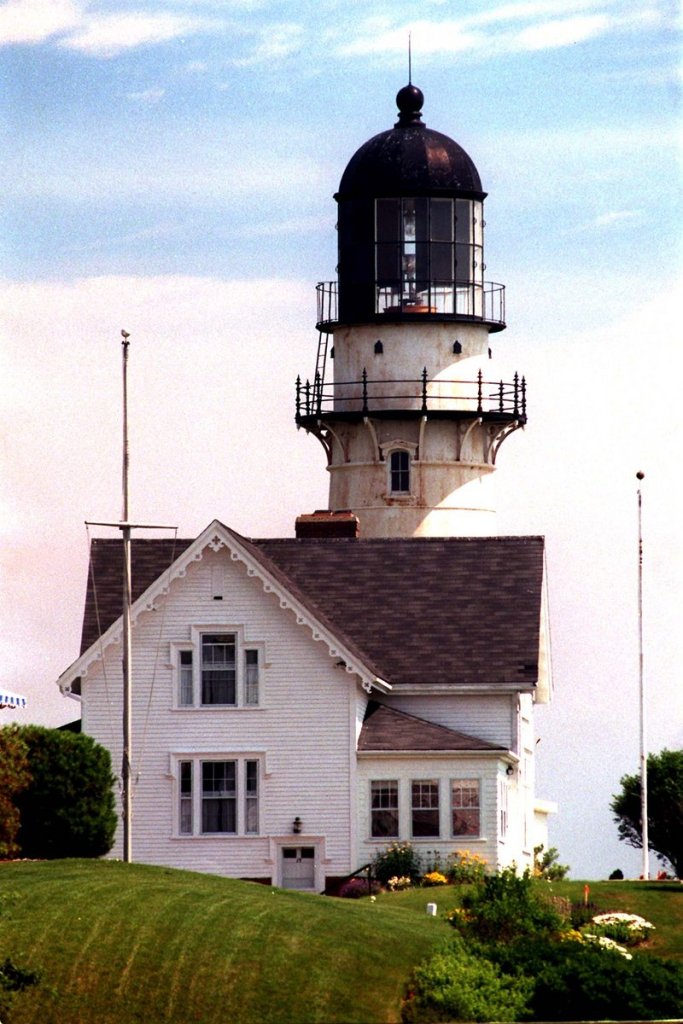MARBLEHEAD, Mass. – Lighthouses have been an important part of New England’s history for nearly 300 years. Leading mariners safely into port and warning of hidden dangers, they have fostered trade and recreation, bolstered the region’s economy and saved countless lives.
Piercing the sky, these beautiful architectural gems are proud symbols of the region’s rich maritime heritage, and these steadfast sentinels of the coast received a well-deserved honor Saturday, when the U.S. Postal Service issued stamps depicting five of the region’s most iconic lighthouses — Boston Harbor, Portland Head, New London Harbor in Connecticut, Point Judith in Rhode Island and Portsmouth Harbor in New Hampshire.
More than 150 lighthouses dot New England’s coast, and each one has captivating stories to tell.
Boston Light, located eight miles from the city on Little Brewster Island, is the nation’s first lighthouse.
The early years of Boston Light, built in 1716, were particularly dramatic. In 1718, George Worthylake, the first keeper, died during a return trip from Boston when his boat overturned in rough seas, sending him, his wife and daughter and two other passengers, including Worthylake’s slave Shadwell, into the water, where all of them drowned.
This catastrophe led Benjamin Franklin, then a precocious lad of 12, to compose a poem, “The Lighthouse Tragedy,” which his brother printed, and which “sold wonderfully” in Boston, although Franklin himself labeled his effort as “wretched stuff, in the Grub-street-ballad style.” (Unfortunately, no copies of this poem have been found.)
During the American Revolution, Boston Light became a casualty of war. In the summer of 1775, American soldiers burned the wooden parts of the lighthouse so the British could not use it as a navigational aid. When the British made repairs, the Americans attacked once again, this time not only disabling the lighthouse, but also killing a few of the British guard and taking many prisoners.
Finally, in June 1776, a few months after the British ended their siege of Boston, but before all of the ships had departed, a group of British marines landed on Little Brewster Island, packed the lighthouse with powder and blew it up — His Majesty’s parting gift to the rebellious colony. A new Boston Light was built in 1783, and that is the one, made taller in 1859, that welcomes mariners into Boston Harbor today.
New England’s lighthouses have inspired many poets, including Henry Wadsworth Longfellow, who grew up in Portland and was especially enamored with the light at Portland Head, which he called “a pillar of fire by night, of cloud by day.” Artists have been equally entranced, as evidenced by the enormous number of paintings and drawings that use the lighthouse motif to capture the essence of New England.
Great acts of heroism have taken place at many of New England’s lighthouses. Soon after the schooner Australia left Boothbay, bound for Boston in late January 1885, the weather got nasty, and the ship foundered on the rocks off Cape Elizabeth.
First on the scene was the lighthouse keeper at Two Lights, Marcus Hanna, who, despite being quite ill, braved the freezing temperatures, blinding snow and drenching spray to wade into the roiling water, throw lines to the two men on board and haul them to safety. For this, Hanna was awarded the Gold Lifesaving Medal by the Coast Guard.
Between the late 1850s and the early 1900s, Ida Lewis, first as the daughter of the keeper of Lime Rock Lighthouse in Newport, R.I., then as the keeper herself, was credited with saving as many as 18 lives and, some believe, many more. Her heroics made her one of the most famous women in America, her story covered by newspapers and magazines nationwide.
When President Ulysses S. Grant paid her a special visit in 1869, and got his feet wet upon stepping ashore, he announced, “I have come to see Ida Lewis, and to see her I’d get wet up to my armpits if necessary.”
Although most New England lighthouses are not open to the public, a small but impressive collection of them are, many of which are operated by nonprofit or government organizations committed to keeping lighthouse history alive. So, instead of just affixing lighthouses to your mail, take the time this summer to visit a few of New England’s fascinating beacons to the world.
Eric Jay Dolin of Marblehead, Mass., is working on a history of America’s lighthouses. He is the author of “Leviathan” and other books on American history. Learn more about his writing at www.ericjaydolin.com.
Send questions/comments to the editors.



Success. Please wait for the page to reload. If the page does not reload within 5 seconds, please refresh the page.
Enter your email and password to access comments.
Hi, to comment on stories you must . This profile is in addition to your subscription and website login.
Already have a commenting profile? .
Invalid username/password.
Please check your email to confirm and complete your registration.
Only subscribers are eligible to post comments. Please subscribe or login first for digital access. Here’s why.
Use the form below to reset your password. When you've submitted your account email, we will send an email with a reset code.